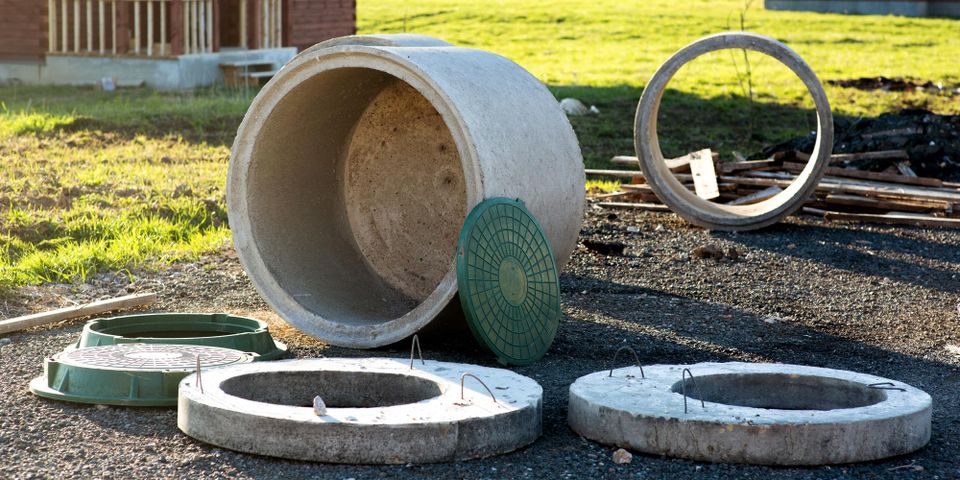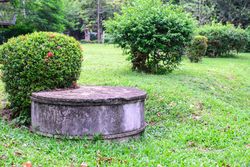What You Should Know About The Anatomy of a Septic System

While septic systems can vary in design and type, conventional home septic systems are underground structures that treat household wastewater using a combination of science and equipment. These septic systems have primary parts every owner should understand in order to follow recommended septic maintenance.
4 Main Parts of a Septic System
1. Septic Tank
The main component of a home septic system is the septic tank, a watertight container usually made of concrete, polyethylene, or fiberglass that is buried underground. Inside the tank, bacteria separate household waste into three layers where solids form a sludge that settles at the bottom while grease and oils create a scum layer by floating to the top, and the remaining liquid empties into a drain field.
Septic pumping is needed every three to five years to clear the tank of sludge and scum. Otherwise, it becomes too full and can push the contents of the tank back through the inlet pipe and into your home.
2. Piping
 The septic tank’s inlet and drainpipes are underrated components of septic systems. A main pipe connects the home to the septic tank, and all of the home’s wastewater travels through it and into the tank for treatment. The drainpipe delivers liquids from the tank to the drain field. Sometimes the inlet pipe can become clogged from buildup and inappropriate items, such as sanitary napkins or cigarettes, but routine septic maintenance can help remove buildup from the pipe.
The septic tank’s inlet and drainpipes are underrated components of septic systems. A main pipe connects the home to the septic tank, and all of the home’s wastewater travels through it and into the tank for treatment. The drainpipe delivers liquids from the tank to the drain field. Sometimes the inlet pipe can become clogged from buildup and inappropriate items, such as sanitary napkins or cigarettes, but routine septic maintenance can help remove buildup from the pipe.
3. Distribution Box
The drainpipe and distribution box push the wastewater from the tank and into a drain field. Then, the distribution box helps deliver wastewater evenly into your drain field. It features several openings for septic pipes to the drain field. When the distribution box malfunctions, it can cause unequal distribution of sewage.
4. Drainfield
A drainfield is generally constructed of soil and gravel at the end of the septic tank’s drainpipe. The wastewater drains into the soil, which filters out harmful bacteria, viruses, and nutrients. Any time new wastewater enters the septic tank, partially treated liquids are pushed into the drain field. If the drainfield becomes overloaded, it will flood and force sewage to the surface or cause a backup in plumbing fixtures.
If it’s time for your septic system to be pumped, call Sloan’s Septic Tank Service LLC in Oakley, MI. For more than 50 years, this local company has specialized in septic maintenance, pumping, and repairs. Call (989) 845-6280 to schedule service or visit them online to learn about their services.
About the Business
Have a question? Ask the experts!
Send your question

